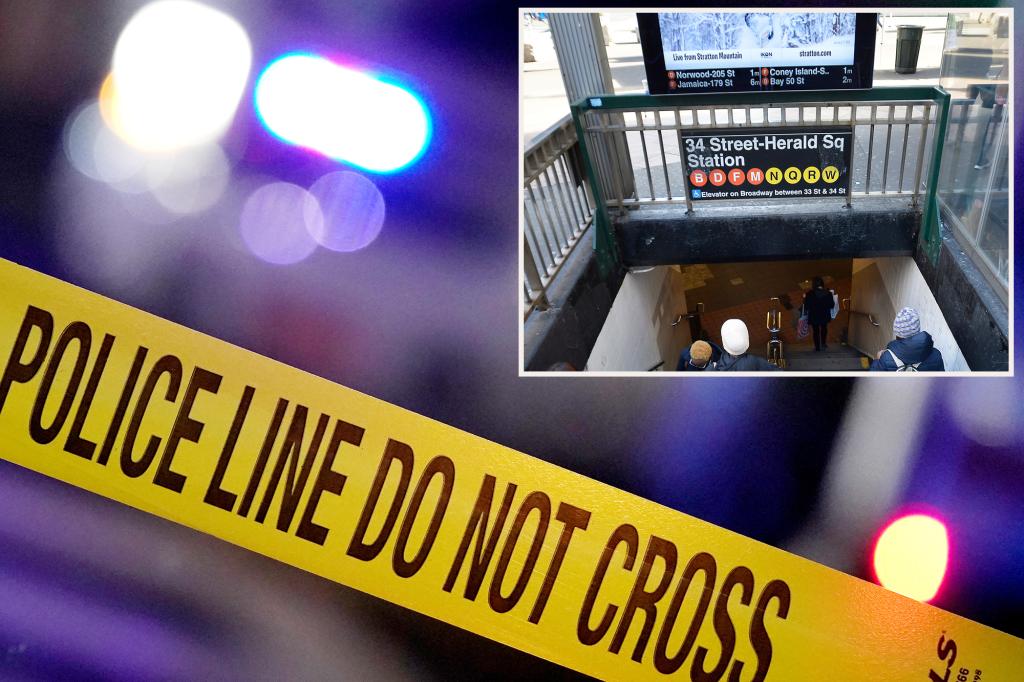The incident at Herald Square station adds to a growing list of unprovoked attacks on the New York City subway system, raising concerns about the safety of commuters, particularly elderly individuals. The 72-year-old victim, who was standing on the platform awaiting the northbound F train, was suddenly and unexpectedly shoved onto the tracks by an unidentified assailant. This act of violence, occurring in broad daylight at a busy station, underscores the vulnerability of individuals within the transit system. While the victim escaped with minor injuries thanks to the intervention of fellow straphangers, the psychological impact of such an experience, coupled with the assailant’s escape, contributes to the pervasive anxiety surrounding subway safety.
This particular attack resonates with a disturbing pattern of similar incidents plaguing the subway system. Just the week before, a 74-year-old man was also pushed onto the tracks in the Bronx, highlighting the particular vulnerability of elderly riders. The assailant in that case was apprehended, but the incident, along with others, contributes to a climate of fear and uncertainty for those who rely on public transportation. Earlier in the month, a 43-year-old individual suffered a similar fate in Brooklyn, shoved onto the tracks by a woman reportedly exhibiting erratic behavior. These recurring incidents, often seemingly random and unprovoked, paint a troubling picture of the challenges facing the city’s transit system and its riders.
The October incident involving an 82-year-old woman pushed onto the tracks in Queens further exemplifies the severity of this ongoing problem. The charges of attempted murder filed in that case underscore the potential for tragic consequences in such attacks. The vulnerability of elderly individuals within the subway system is a particularly concerning aspect of this issue. These individuals, often with limited mobility and less able to react quickly to danger, become easy targets for such senseless acts of violence. The cumulative effect of these incidents reinforces the perception, whether statistically accurate or not, that the subway system is a dangerous place, particularly for older riders.
While city officials point to overall crime statistics showing a decrease in criminal activity, the perception of danger within the subway system persists. This perception is fueled not only by the highly publicized incidents of track shoving but also by a general sense of unease stemming from various factors, including reports of harassment, disorderly conduct, and other quality-of-life issues within the transit environment. The fear generated by these incidents and the underlying anxieties about safety contribute to a decline in ridership and erode public trust in the city’s ability to maintain a secure and reliable public transportation system. Addressing this perception of fear is crucial for restoring confidence and ensuring the vitality of the subway as a crucial component of the city’s infrastructure.
The recurring nature of these attacks necessitates a comprehensive approach to addressing the problem. Increased police presence within the subway system, particularly at stations identified as high-risk, is one potential strategy. Improved surveillance technology, including more strategically placed cameras and improved monitoring systems, could also play a vital role in deterring potential attackers and aiding in the apprehension of perpetrators. Beyond these security measures, addressing the underlying issues that contribute to such violent behavior, including mental health services and social support programs, is essential for a long-term solution.
Ultimately, restoring a sense of safety and security within the New York City subway system requires a multifaceted approach involving law enforcement, infrastructure improvements, and social services. The well-being of the city’s residents and the health of its public transportation system are inextricably linked. Creating a safe and reliable subway environment is essential for ensuring the city’s continued economic vitality and the overall quality of life for its citizens. Addressing the fear and anxiety surrounding subway safety is not merely a matter of law enforcement; it is a social imperative that demands a comprehensive and sustained effort from all stakeholders.










